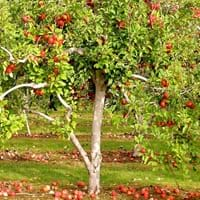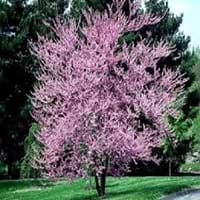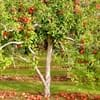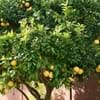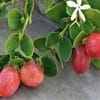Life Span
Perennial
Perennial
Type
Flowering Plants, Fruits, Trees
Tree
Origin
Central Asia
Northeastern United States, Mid-Atlantic United States, Southeastern United States, North-Central United States, Central United States, South-Central United States, Canada
Types
Aceymac apple, Bailey Sweet apple, Dabinett apple, Nehou apple
Not Available
Number of Varieties
Not Available
Habitat
Hillside
Alpine Meadows, shaded woods
USDA Hardiness Zone
5-8
4-9
Sunset Zone
A1, A2, A3, 8, 9, 10, 11, 12, 13, 14, 15, 16, 17, 18, 19, 20, 21, 22, 23, 24
1a, 1b, 2a, 2b, 3a, 3b, 7, 8, 9, 10, 11, 12, 13, 14, 15, 16, 17, 18, 19, 20
Habit
Oval or Rounded
Oval or Rounded
Flower Color
White
Red, Purple, Violet
Flower Color Modifier
Not Available
Bicolor
Fruit Color
Green, Red
Brown, Chocolate
Leaf Color in Spring
Dark Green
Purple, Plum
Leaf Color in Summer
Green
Green, Dark Green
Leaf Color in Fall
Brown, Green, Light Yellow
Yellow, Yellow green
Leaf Color in Winter
Not Available
Not Available
Leaf Shape
Oblong
Heart-shaped
Plant Season
Spring
Spring, Summer, Fall
Sunlight
Full Sun, Partial shade
Full Sun, Partial Sun
Growth Rate
Medium
Medium
Type of Soil
Loamy
Clay, Loam, Sand
The pH of Soil
Neutral
Acidic, Neutral, Alkaline
Soil Drainage
Well drained
Well drained
Bloom Time
Fall, Summer
Early Spring, Spring, Late Spring
Tolerances
Drought
Drought
Where to Plant?
Ground
Ground
How to Plant?
Grafting, Seedlings, Transplanting
Cuttings
Plant Maintenance
Medium
Medium
Watering Requirements
Medium
Keep the ground moist but not water-logged
In Summer
Lots of watering
Lots of watering
In Spring
Moderate
Moderate
In Winter
Average Water
Average Water
Soil pH
Neutral
Acidic, Neutral, Alkaline
Soil Type
Loamy
Clay, Loam, Sand
Soil Drainage Capacity
Well drained
Well drained
Sun Exposure
Full Sun, Partial shade
Full Sun, Partial Sun
Pruning
Prune when plant is dormant, Remove dead or diseased plant parts
Prune to stimulate growth, Remove damaged leaves, Remove dead branches, Remove dead leaves
Fertilizers
All-Purpose Liquid Fertilizer
All-Purpose Liquid Fertilizer
Pests and Diseases
Aphids, Canker, Caterpillars, Powdery mildew, Root rot
Bacterial Canker, Verticillium Wilt
Plant Tolerance
Drought
Drought
Flower Petal Number
Single
Single
Foliage Texture
Medium
Medium
Foliage Sheen
Matte
Glossy
Allergy
Mouth itching, Throat itching
Unknown
Aesthetic Uses
Not Used For Aesthetic Purpose
Beautification, Formal Garden, Ground Cover, Showy Purposes
Beauty Benefits
Not Available
Not Available
Environmental Uses
Air purification
Air purification, Food for animals, Food for birds, Nesting sites for birds
Medicinal Uses
Cancer, constipation, Diabetes, Diarrhea, Dysentry, Fever, Heart problems, Tooth ache
Unknown
Part of Plant Used
Fruits
Not Applicable
Other Uses
Used As Food, Wood is used for making furniture
Beneficial species for attracting pollinators, Used as Ornamental plant
Used As Indoor Plant
No
No
Used As Outdoor Plant
Yes
Yes
Garden Design
Fruit / Fruit Tree, Shade Trees, Showy Tree
Feature Plant, Foundation, Mixed Border, Shade Trees
Botanical Name
Malus domestica
CERCIS canadensis 'Forest Pansy'
Common Name
Apple Tree
Eastern Redbud, Forest Pansy Redbud
In Hindi
सेब का वृक्ष
Forest Pansy Redbud
In German
Apfelbaum
Forest Pansy Redbud
In French
Pommier
gainier du Canada
In Spanish
Manzano
Cercis canadensis
In Greek
μηλιά
Forest Pansy Redbud
In Portuguese
Macieira
Forest Pansy Redbud
In Polish
jabłoń
Judaszowiec kanadyjski
In Latin
Arbore
Forest Pansy Redbud
Phylum
Magnoliophyta
Spermatophyta
Class
Magnoliopsida
Magnoliopsida
Clade
Angiosperms, Eudicots, Rosids
Angiosperms, Eudicots, Rosids
Tribe
Not Available
Not Available
Subfamily
Not Available
Not Available
Number of Species
Not Available
Not Available
Importance of Apple Tree and Forest Pansy Redbud
Want to have the most appropriate plant for your garden? You might want to know the importance of Apple Tree and Forest Pansy Redbud. Basically, these two plants vary in many aspects. Compare Apple Tree and Forest Pansy Redbud as they differ in many characteristics such as their life, care, benefits, facts, etc. Every gardener must at least have the slightest clue about the plants he wants to plant in his garden. Compare their benefits, which differ in many ways like facts and uses. The medicinal use of Apple Tree is Cancer, constipation, Diabetes, Diarrhea, Dysentry, Fever, Heart problems and Tooth ache whereas of Forest Pansy Redbud is Unknown. Apple Tree has beauty benefits as follows: Not Available while Forest Pansy Redbud has beauty benefits as follows: Not Available.
Compare Facts of Apple Tree vs Forest Pansy Redbud
How to choose the best garden plant for your garden depending upon its facts? Here garden plant comparison will help you to solve this query. Compare the facts of Apple Tree vs Forest Pansy Redbud and know which one to choose. As garden plants have benefits and other uses, allergy is also a major drawback of plants for some people. Allergic reactions of Apple Tree are Mouth itching and Throat itching whereas of Forest Pansy Redbud have Unknown respectively. Having a fruit bearing plant in your garden can be a plus point of your garden. Apple Tree has showy fruits and Forest Pansy Redbud has no showy fruits. Also Apple Tree is flowering and Forest Pansy Redbud is not flowering . You can compare Apple Tree and Forest Pansy Redbud facts and facts of other plants too.
